Indian cinema 2023: 10 films that captured the spirit of our times
Pathaan set the ball rolling in January, setting the stage for the subsequent year-long streak of (mostly) Hindi films that embody the zeitgeist
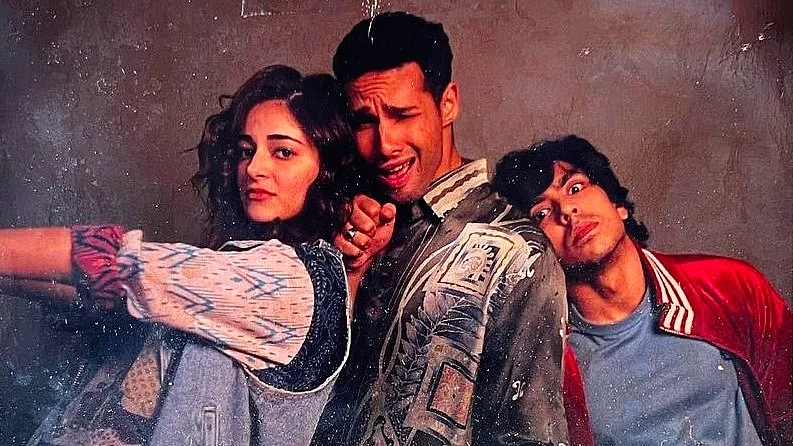
Pathaan set the ball rolling in January, housing the willingness of audiences to let theatres turn into carnivals, and setting the stage for the subsequent year-long streak of (mostly) Hindi films that capture the zeitgeist.
As defined by the Oxford dictionary, zeitgeist is "the defining spirit or mood of a particular period of history as shown by the ideas and beliefs of the time".
With that definition in mind, we also had a film like Satyaprem ki Katha, an honourable mention for bravely inaugurating fresh conversations in Hindi cinema on asexuality, the nature of consent, and the impacts of sexual trauma.
Which brings us to our top 10, and here they are in no particular order:
1. Kho Gaye Hum Kahan
Perhaps the most obviously and urgently timely film of the lot, Kho Gaye Hum Kahan is a blunt and extended exploration of the devastating psychological impacts of social media addiction; in fact, it may be perceived as too blunt and even doggedly hackneyed in certain portions, such as in its examinations of the inception of "trolling" and the eventual resolution(s) of the central conflict(s).
But, the conviction behind all of it remains unwavering, expressing a need to accessibly explain to people of other demographic groups the peculiarities of the mercurial nature of the generation that it is focusing on; the personalities of its protagonists are moulded by their projected personas on social media, characteristically blurring the possibility of a distinction between the imaginative subject and the imagined projection.
To that end, debutant director Arjun Varain Singh presents possibly the most accurate portrayals of social media platforms on Indian screen, radically straying from the norms of using it as a convenient plot device that can make everything "viral" in seconds. The lethal nature of deriving validation from digital pretensions, the hollowness of dating applications, the ingratitude and dishonesty that are engendered by unfettered ambition; all of it finds its place in the narrative.
Most importantly, the film does not make one feel like it is patronising them with alien pieces of information; it feels more like a necessarily grim conversation that gets less tapered and more optimistic as more vulnerabilities are revealed. At the end, the film does make an appeal for a greater revelation of vulnerabilities as a potential antidote for our shallow times.
Also Read: Book it! Top 10 reads of 2023 going on 2024
2. Bheed
As a population, we will never be able to tangibly embody the notion of the "post-pandemic" unless we embolden empathetic documentations of the layers of socio-economic exclusion that characterised our government's response to the crisis.
Directed by Anubhav Sinha and presented in his signature tonality, Bheed is a bold confrontational document, highlighting the chasm between the stated intent of the ruling class and their policies of implementation. Led by powerful performances from a stellar ensemble cast, a lion's share of the film unfolds at an interstate border, where Surya Kumar Singh Tikas (Rajkummar Rao) — an officer from a marginalised caste who is shown to be frequently given a front-row seat to the system's apathy toward people of his own caste — is placed in charge of a unit for a day, immediately following the commencement of the nationwide lockdown.
As a result of mass confusion, a spontaneous amalgamation of common folk (the titular crowd), political bigwigs, police officials, and medical workers is formed at the border. Decidedly bleak and pointedly acerbic, the film still palpably retains its core empathy, seeking to delve into the battered hearts of even the most prejudiced and/or privileged.
While more overt references to the country's political executive were excised, the film is unsparing in its attack on the perpetrators of arbitrary governance; one of the primary thematic motifs of the film is the reconstruction of the concept of justice that would have occurred, had its execution been handed over to its victims.
3. Zwigato
The plight of gig workers in a precariously unregulated sphere of work is one of contemporary urban India's most visibly invisible machinations. Even in terms of cinematic representation, this ever-expanding sector of the economy has been largely overlooked by filmmakers. Consequently, to finally witness an example of that representation being a film starring Kapil Sharma as a delivery man, directed by Nandita Das, was quite the surprise.
Depicting its protagonist and his world through a lucid and straightforward narrative that is also often rich in subtext, Zwigato is an assemblage of fleeting and seemingly mundane struggles that cannot be overcome by satisfactory resolutions.
When Das does choose to hint at the entanglement of multiple exclusions beneath the drudgery of the occupation itself, we are exposed to nuggets of commentary dealing with the institutional impediments to unionisation in a gig economy, the frantic impulse to prioritise a gendered division of labour over sustenance, and the relative hierarchies of discrimination that make the poor fear the poorer. In this regard, Zwigato is a succinct and understated glance at some of our most overworked and underpaid workers.
4. Jawan
Despite director Atlee adroitly utilising every time-tested trick and stratagem in the mass cinema playbook, Jawan boldly stood out as a thunderous return to form for unabashedly anti-establishment narratives in popular Hindi cinema.
As a society, we have evolved to be governed by large corporations in cahoots with the government, a direct outcomes of which are unprecedented unemployment, the privatisation of public sector industries, the worsening distress of farmers and agricultural labourers, and massive tax exemptions for the wealthiest.
For a film to address all of those issues, in an increasingly neo-fascistic political landscape, while carefully protecting itself from sliding into clumsy or self-indulgent waters, is no trivial feat. A subplot in the film is explicitly lifted from the 2017 Gorakhpur hospital deaths and the associated case of Dr Kafeel Khan; meanwhile, at another point in the film, a character expressly states that the government sanctioning the construction of environmentally hazardous factories on peoples' lands is the administrative equivalent of terrorism.
When large sections of the audience effusively received such potentially polarising messages, delivered through Shah Rukh Khan at that, it underscored the need for popular cinema to have room for peoples' cinema, and the triumphant re-emergence of a newly necessary "angry young man" as a central figure.
5. Animal
With Animal, which is only his third film, director Sandeep Reddy Vanga firmly established Ranbir Kapoor as a killer performer (pun not intended) with enough ra(n)ge to portray the titular beast and himself as the undisputed grandmaster of provocative machismo and self-destructive brutality.
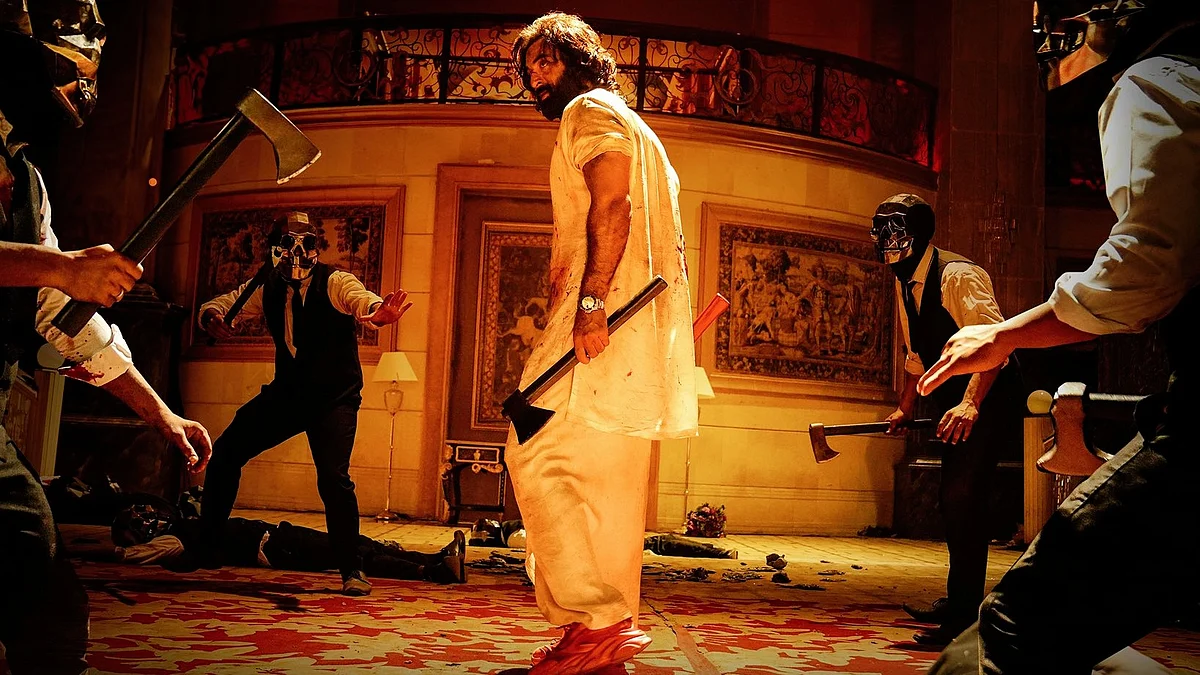
In the case of this one, it is absolutely obsolete to mull over whether one likes this film or dislikes it; Vanga successfully mounted a film that simply could not be ignored, or even skipped. Over the one month that has elapsed since its release, the film has steadily remained one of the most contentious topics of debate in the country.
Interpersonal relationships have been fractured owing to overpowering disparities in opinion regarding the film and its misogynistic overtones, and it even found its place as an example of socially detrimental cinema in Parliament. What it also indubitably asserted was that the waning attention spans of audiences would surrender to effective articulations of repressed f(r)ictions and a gripping narrative.
Through its portrayal of troubled characters trapped in violently distant relationships, the film managed to evoke strong sentiments, despite employing a syntax that is fairly unfamiliar for the Indian population. Irrespective of where one stands on it, the significance of an A-rated extravaganza clocking in at three-and-a-half hours becoming the third highest-grossing film of 2023 cannot be overstated.
6. Gadar 2
Substituting the tempered and inclusive patriotism of the original film with a deliberately deafening (not just applicable to its top-billed actor) hypernationalism that needs to gaudily trample upon our neighbouring hostile country at every turn to assert itself, Gadar 2 proved to be the year's biggest sleeper hit.
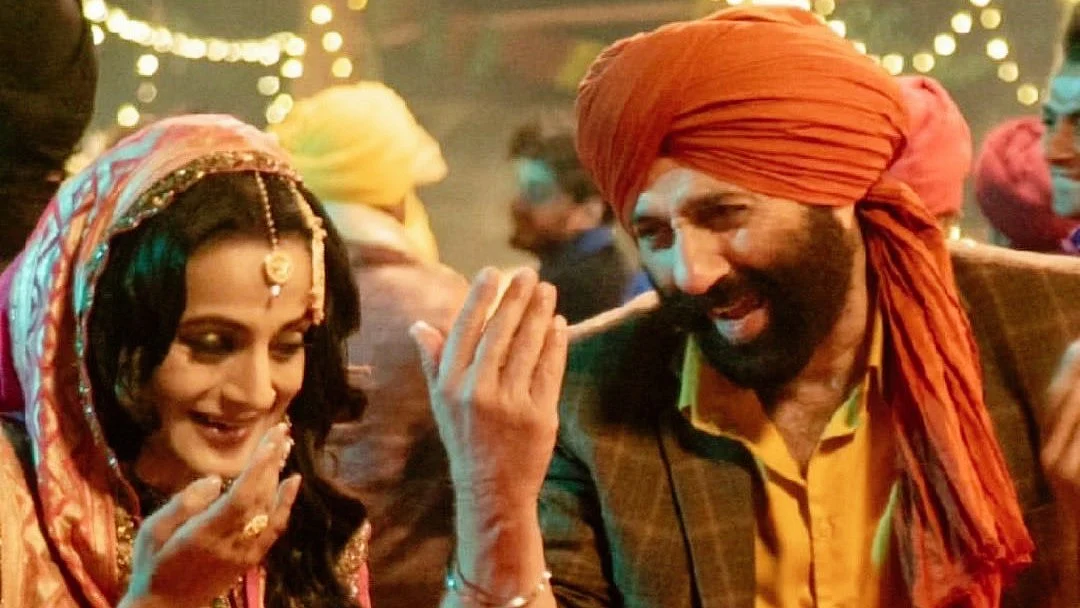
It was expected that audiences who express fidelity to the original would step in to explore the continuation of the 'prem katha' between Tara Singh (Sunny Deol) and Sakina (Ameesha Patel), but the unexpected bit was the mass hysteria that ensued.
Single-screen theatres were big beneficiaries of this hysteria, and deservedly so. The film stands as a testament to the inter-generational appeal of the legacy of Gadar, as much as a demonstration of the strident pitch (again, not limited to Deol) at which nationalism needs to be expressed in order to be impactfully conveyed to current audiences.
The subplots may have been repetitive and predictable, but the emotional octave remained consistently synchronised with its purpose. Alongside Jailer, Gadar 2 displayed, through sheer raw numbers, the undeniable value of nostalgia in a post-pandemic world.
7. The Kerala Story
Mired in legal controversies and rampant speculation even before its release, The Kerala Story has been one of the most hotly debated films of the year, with most of the focus around its incendiary and factually outlandish claims regarding the phenomenon of 'love jihad' and the purportedly international conspiracy of smuggling forcibly converted brides out of their countries by ISIS.
Without shedding light on preventive measures taken by the Union government itself to prevent religious militancy in Kerala, director Sudipto Chatterjee chose to peddle a dangerously falsified and hyperbolic narrative about the state (and the overall state of the country itself) to cater to an increasingly sectarian gallery.
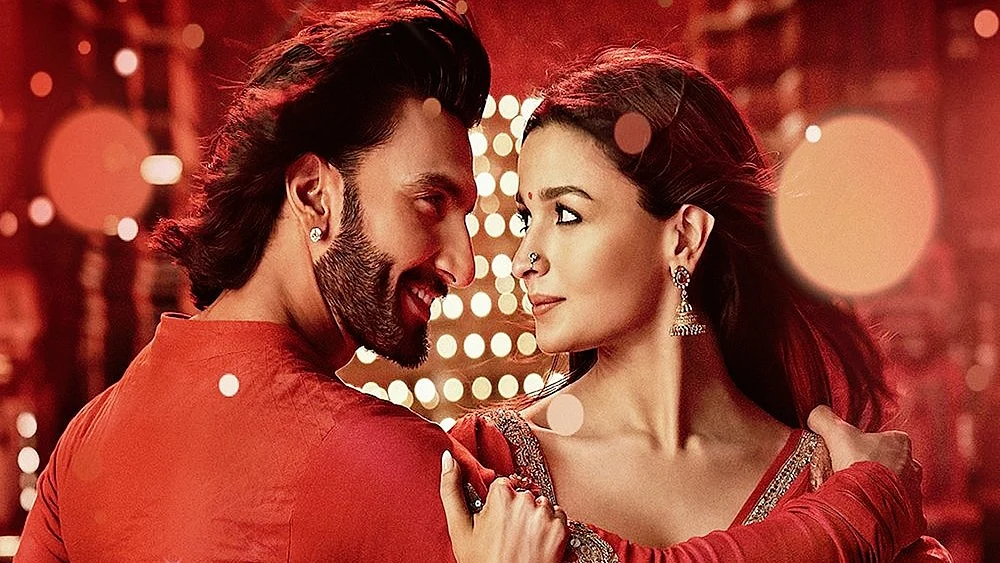
The sheer spontaneity with which the film was elevated to the top by Indian audiences was reflective of the continuation of a contagious trend; it showed us that political manipulation through fear-mongering and reductive polarisation will continue to attract audiences unabated, and that these emotional buttons that are being pushed in our minds belong to a hegemonic ruler's remote control.
8. Rocky aur Rani kii Prem Kahani
What do you get if you combine director Karan Johar's bombastic (if not garish) aesthetic and sartorial sensibilities, a lead pairing (Ranveer Singh and Alia Bhatt) that has already been utilised, a Saregama Carvaan-fuelled medley of old Hindi film songs featuring Dharmendra romancing Shabana Azmi, old-school song-and-dance sequences that act as Johar's tributes to Yash Chopra and Sanjay Leela Bhansali, and a powerfully palatable and uniquely homegrown exploration of the debilitating politics of masculinity in a post-pandemic machismo-riddled 2023?
A crackling soundtrack that remains one of the year's most popular, and a sincerely received blockbuster, evidently.
From a striking monologue on cancel culture to heartfelt commentaries on building bridges and mending resentments between distanced generations, the film pulled off its necessary affiliation to our zeitgeist with elan, carrying with it Johar's indelible personal touch.
Among a handful of other films that counted as box-office surprises this year, Rocky aur Rani kii Prem Kahani was among the biggest indicators of the fact that Indian audiences still require amorous interludes and refreshing pit stops amidst all the adrenaline-pumping carnage.
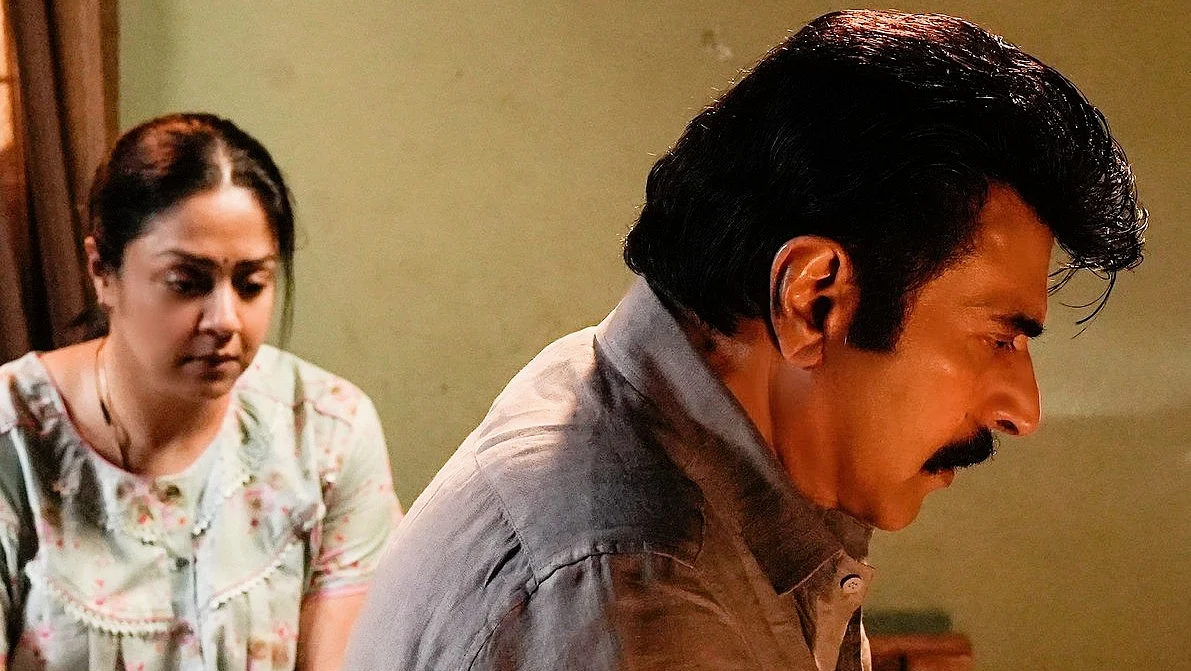
9. Kaathal: The Core
Compared to most of his contemporaries, especially within the confines of Malayalam cinema, Mammootty has always had a more heterodox approach in terms of his choice of scripts, delivering complex performances while playing unconventional characters in decidedly grounded narratives.
In 2023, he proved his versatility yet again, and in this leg of his career, he is submitting himself seamlessly to what is referred to as 'new generation' cinema in Malayalam; from Nanpakal Nerathu Mayakkam to Kannur Squad, the sharpness of Mammootty's work did not flinch. His most socio-politically relevant work of the year, however, came with Jeo Baby's Kaathal: The Core, where Jyothika plays his wife who decides to legally expose her politician husband's closeted homosexuality.
In a difficult but soothing reminder of how tenderly and sensitively human beings can portray and/or handle conflict, the film gives us a contemporary world where everybody must be empathised with and understood. In an era of growing emotional and political polarisation, films like Kaathal function almost like lullabies that temporarily keep our nightmares at bay.
10. Jailer
Even the more lacklustre films of 'Super Star Rajini' end up outperforming the crowd-pleasers of other established performers, and ever since Karthik Subbaraj's Petta (2021), Rajini has been demonstrating the way for an (apparently) ageing star to revisit the simplest of effective tropes with renewed aplomb and a spiffy presentation.
But the sheer mania that engulfed Jailer after it was handed over to the masses was staggering; following an absence of two years from the silver screen, Nelson's direction and Rajinikanth's presence proved that the inimitable swagger of the 73-year-old actor was enough to mesmerise crowds, even at its most understated.
Audiences went ballistic at the simple gait, the glances, and the gestures of their thalaivaa; interestingly, newer generations of his viewers were equally swayed by the nostalgic value of his persona. Elevated by similarly impactful special appearances from Shivarajkumar and Mohanlal, Jailer struck a chord with audiences in an effortlessly "pan-India" ode to its hero.
Follow us on: Facebook, Twitter, Google News, Instagram
Join our official telegram channel (@nationalherald) and stay updated with the latest headlines
